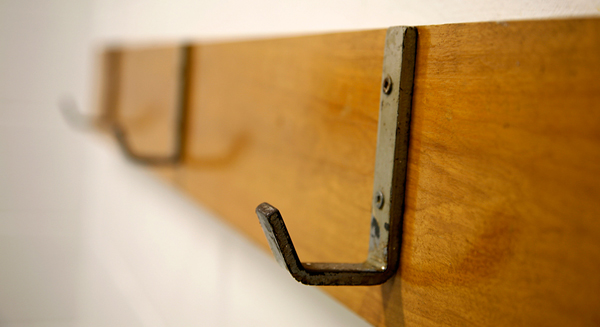Let’s face it: there’s a lot of material you’re going to have to memorize in order to pass the Patent Bar exam. Even if you cut out the extraneous material and focus on what’s most likely to be tested, you’ll soon find out there are countless dates and facts you’ve got to know cold.
In addition, you’ll have to memorize statutes and rules as well as MPEP sections and subsections. These often only have an arbitrary relationship to the concepts they brand. In these cases, memorization is the only choice.
Just to be clear, memorization is your ability to commit specific facts or information to memory and retrieve them without too much effort.
According to OneClass.com we are more likely to remember information that is engaging, colorful, vivid and active.

If you’ve spent even a few minutes preparing for this exam, you already know that the content within the MPEP is not engaging, colorful, vivid, or active. In fact it’s about as far from it as you can get.
The key is that many of the best memorization techniques link the new facts you’ll have to remember to something that is engaging and active.
So now that we’ve covered a little about memorization, let’s discuss the top 13 memorization strategies sure to help you prepare for and pass the Patent Bar:
Technique #1: Repetition
Many test takers simply read and re-read the same material repeatedly hoping some of it sticks. However when used that way, repetition is not a very effective technique.
The trick with repetition is you have to practice recalling the information in order to have any chance of remembering it. To initiate the memorization process, the information must be at least partially contained in your short term memory. Your short term memory disappears fast (studies say 50% of it disappears almost immediately) unless you can move the information over to your long term memory.
Simply reading and re-reading the same information over and over again puts it in your short term memory, but if you do nothing else with that information, most of it never transfers over to your long term memory.
Here are a few techniques to help move knowledge over to your long term memory banks where you can hopefully hang onto to it long to pass the exam:
- Create a short outline of the material as you read it.
- Copy the text by hand.
- Read the material aloud.
- Listen to the material repeatedly.
- Create a summary or re-write the main information.
Repetition combined with a few of the other tips we’ve got for you below will help you get on the fast track to a passing score on the Patent Bar exam.
Technique #2: Chunking
Chunking is a useful memorization method that makes repetition even more effective. The idea is to break down whatever you’re trying to memorize.
For example, if you want to memorize a poem you wouldn’t try to memorize the whole thing all at once. You’d break it up.
To bring this back to the Patent Bar, let’s assume you distill down the main facts of a particular MPEP chapter into a single sheet of paper. You cannot expect to memorize all the facts on that sheet of paper all at once. Instead, you need to start with a few facts. And you’d want make sure you have those facts memorized before you move onto memorizing new facts.
Often memorizing 3 to 4 phrases or items at a time works best, but this really depends on your abilities. If you choose to chunk sentences, make sure you’re chunking it where it makes the most sense.
Here’s a good plan of attack for using chunking:
Memorize the first chunk (whatever size you decide works best for you), then the second chunk, then review both the first and second chunks together. Next, memorize the third chunk, and then make sure you review the first, second and third chunks together.
When you do it this way, it’s only necessary to reach 80% confidence at each step (because you’re going to review it all again anyway). Once you’re getting 80% of the chunks right, move on to the next chunk and keep going.
Technique #3: Mnemonics
Mnemonics are one of the most widely used methods of memorization. A mnemonic is created by taking an item that doesn’t have meaning to you and you arranging it in a way that is meaningful.

There’s no doubt you’re familiar with Roy G. Biv; the mnemonic developed to help remember the order of the colors of the rainbow. Red, orange, yellow, green, blue, indigo, and violet are the colors in the correct order. Roy G. Biv was created by taking the first letter of each color and combining them together to make a new word.
The idea behind using mnemonics is that we can better remember something that’s meaningful to us. They work best when you create them on your own as only then will they have meaning for you.
For instance, you could create a mnemonic out of Pre-AIA 35 U.S.C. 102 (a) – (g). It’s a major statute and the pre-AIA version is still tested even though the America Invents Act (AIA) has already rolled out. You need to understand each of the sections of this statute.
If you want to create a mnemonic out of it, you could use the letters in the different sections to come up with a word that helps you remember what each section is about.
And there are a couple of ways to make mnemonics even more effective. If you’re a visual learner you can create mnemonics, write them down, and post them all over your study area.
Another idea for making mnemonics more memorable is to use a positive, vivid, colorful image. You may even incorporate sounds, smells, touch, movements, and feelings in addition to pictures or symbols.
Again, the facts within the MPEP aren’t exactly vivid, but attaching a plain fact to something that is vivid or colorful helps you remember it. It doesn’t matter how weird the image is, often the weirder, the more likely you are to remember it!
Technique #4: Link Method
The Link Method is where you associate items in a list with images. It’s called the Link Method because you connect information in your mind like links in a chain using these images. Essentially, you associate two items in a list with an image.

For starters, you would think of an image representing the type of list you want to remember. Then think of an image that links the first item on the list to the second item.
Next think of an image linking the second item to the third item. Just continue on like this for the rest of the items. Eventually you’ll have a long chain of images helping you to remember each item.
Technique #5: Story method
The Story Method is very easy to implement once you master the Link Method. For the Story Method you simply combine all the links from the Link Method into a big picture story. So you would take all of your imagery associations from the link method and combine them all into one story.
The biggest problem with the story method is that it is limiting. After you string too many links together it will break down as the story will become too long. It’s better to have multiple stories based on different categories of items if you can.
When it comes to the Patent Bar this shouldn’t be a problem as you will have many different categories of items to memorize. You can break your categories up into chapters or topics.
Technique #6: Loci Method
For the Loci Method memorization technique you will associate a list of items with familiar locations.
To implement this method you’ll need to think about a familiar location such as your house or apartment. It could also be a place you are familiar with such as the beach, a store, your neighborhood, etc … Next, imagine the content you need to remember placed in a specific part of the location.
For example, if you’re using your house as the location, you may imagine an important fact from the MPEP in one of the various rooms of your house. It works best if the items you want to remember go from one location within the house to another in the same way you move through the house (i.e. going through the front door to the kitchen and so on).
The more stop points you have within the house, the more you can memorize. So as you come in the front door and close it behind you, you may think about a particular fact in the MPEP. Try to tie that fact to the action of closing your front door. Then imagine moving down through the hallway while tying another fact to that movement.
It doesn’t matter how crazy it sounds, it’s just to help you memorize. Often the stranger the story or connection to the fact, the more likely you are to remember it.
Technique #7: Peg System
The Peg System utilizes familiar pegs which are mental hooks that you hang the information you’re trying to learn on. By hanging the information you’re trying to learn onto a peg you will be able to retrieve that information much easier.

For instance, pegs can be the numbers from 1 to 10. You will never forget how to count from 1 to 10 so if you associate specific information with those numbers you will remember that information quite easily.
You can use the same pegs multiple times. That means you could have several lists of items you need to remember and you could use 1 through 10 for each of those lists. Just categorize the items within the lists and then think of each category individually.
Instead of just numbers, you can also use the letters of the alphabet or anything else you already have completely committed to memory.
You can use the peg system with the link or loci methods to memorize massive amounts of information.
Technique #8: Mind mapping
Mind maps work great as a study tool. They allow you to see the big picture and make connections between different pieces of vital information. The PES Patent Bar review course incorporates mind maps within it, providing you with dozens of mind maps depicting the structure of each MPEP chapter.
To create your own mind map you simply pick the main topic idea for your map and put that in the center. From there you create branches that relate to that specific topic. For each branch you create you can delve deeper and deeper, creating even more branches. Keep repeating the process until you’ve mapped out the entire topic.
Other visual tools will also work to help you remember information. These might include flowcharts, illustrations, and diagrams.
Technique #9: Preview the Material
Quickly skimming the material before you start studying helps you see the big picture and gives you a better understanding of the context. Once you’ve previewed it, you can go back in and fill in the gaps.
This works in part because information that falls within a broader category is easier to access, helping with retrieval.
The PES Patent Bar review course does this for you by starting you out with the Basic Patent Training™ course which was created to give you a big picture overview.
From there, you can preview each chapter of the MPEP by using our Guidebooks. This way you’ll start learning what’s covered in each chapter. Once you’ve previewed a chapter, go back and review it more closely.
Technique #10: Study Breaks
We all know that you need to take breaks during studying, but did you know that taking breaks can help with memorization?
It’s true.
People remember more of what was learned at the beginning and the end of a study session. Therefore, if you take more breaks then you’ll have more study sessions which translates to more beginnings and endings.
Technique #11: Erase to remember
Erase to remember is an interesting and unique study tip that’s easy to implement. There are two steps to it. The first step is to write out the information you want to remember. You can write the information out on paper or type it into a word document program.
Then erase it (or delete it) as you memorize it.
Simple, but effective.
Technique #12: Practical Exercises
The more active you are with the information you’re trying to learn, the better. That’s why incorporating active learning into your study sessions is highly valuable.

The PES Patent Bar review course was created with this memorization tip in mind. It incorporates quiz questions (like the one shown above) at every step of the program.
The reason answering questions works so well is that it helps train your brain to retrieve the information. Getting the information into your brain isn’t the hard part. It’s getting it back out that causes the problem. So practicing retrieving the information is highly effective.
Technique #13: Write to Remember
Writing about the information you want to remember helps you commit that information to memory. You can start a blog or keep a journal.
To take it even one step further, you can try to teach someone else, or even yourself as you learn. The ability to teach material shows mastery of that material.
Conclusion
The best way to use these tips is to narrow down the list to a few that make the most sense for you. Then start trying those techniques out and you’ll start figuring out what works and what doesn’t work for you.
A good take away from this article is the realization that you need to do something with the information you’re trying to memorize. You can’t simply review it a few times and call it good (at least not the most heavily tested material on the exam).
One guideline that will help you study with the most impact is to plan to dedicate half your study time reading the material while spending the other half doing something with it.
In addition, simply have the intention to remember. You will be able to recall 20 to 60% more of what you read and hear when you intend to remember it. And that alone is pretty good news for your chances of passing the Patent Bar exam.
